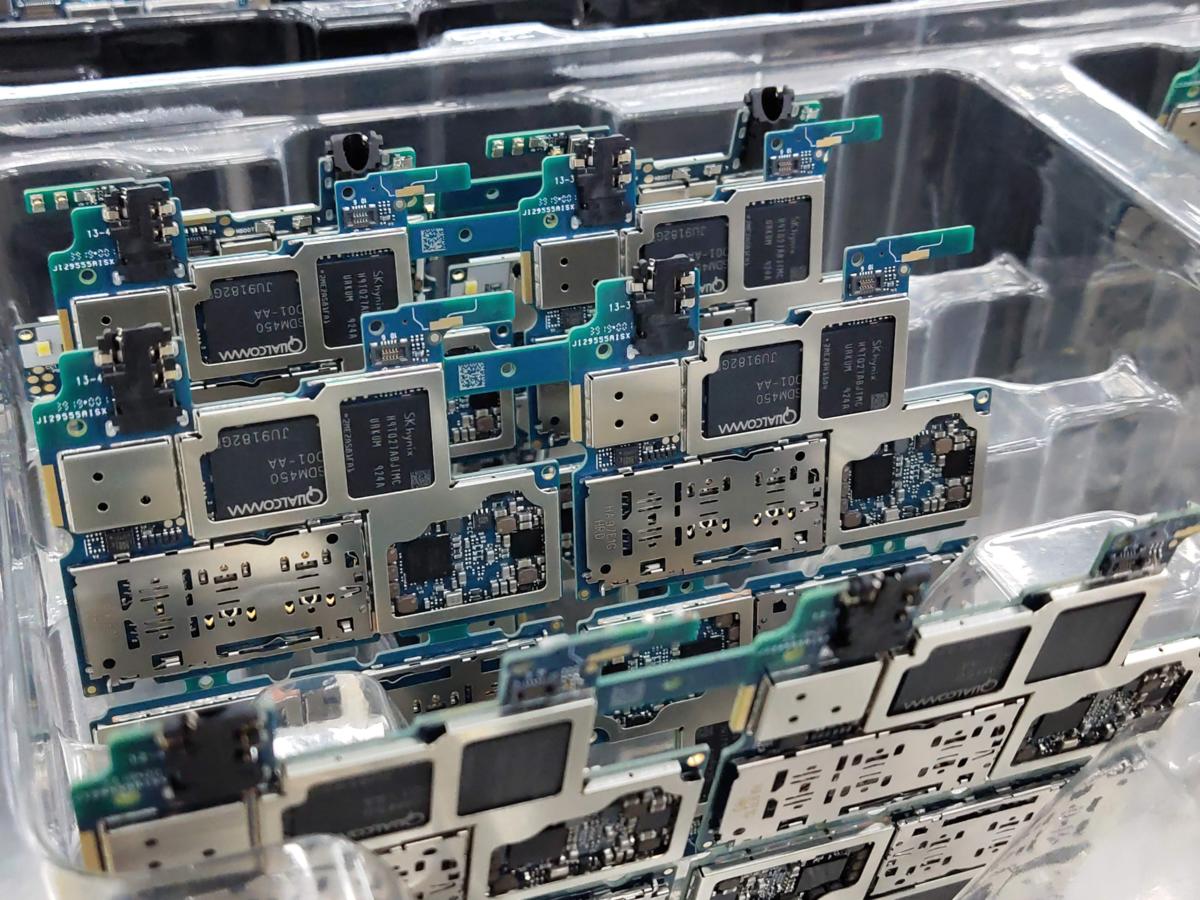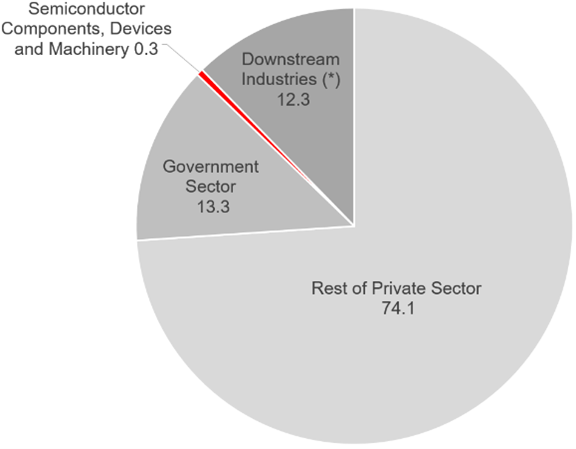Chips are everywhere: in consumer electronics, in cars, in medical devices and in defence systems. As such, they are a basic requirement for the functioning of modern economies. A global shortage of chips can thus have a disproportionate impact on the world economy.

"The Buddha, the Godhead, resides quite as comfortably in the circuits of a digital computer, as he does at the top of a mountain or in the petals of a flower”, wrote Robert Pirsig in his Zen and the Art of Motorcycle Maintenance. Without delving into the metaphysical disquisition of whether a semiconductor is the hearth or rather the soul of a digital computer, we can certainly claim that computer chips are everywhere, in consumer electronics, cars, medical equipment and defense systems.
Chips are the core ingredient for the modern economies to operate, so the global chip shortage disproportionately impacts the world economy. For example, despite the tiny weight (0.3%) of the semiconductor industry in the US output, 12% of the US economy embodies semiconductors in its products (Chart 1).
(*) Industries for which input spending on chips exceeds 1% of value added or of total inputs consumption. Source: Goldman Sachs (GIR), 21 April 2021.
Adding to the chip shortage worries is the shortage in silicon metal, sparked by a production cut in China, which has sent prices up 300% in less than two months.
Small and in demand
Automobile manufacturers cutting production and surging consumer electronic prices have been making headlines and got the world's attention. Nevertheless, the ramifications of the chip bottleneck are significant for inflation, employment and profit margins, causing alarm bells for politicians and policymakers. Economists think that some kind of market failure must lie behind the chip crisis: in fact, the reason is instead a combination of factors from both supply and demand sides.
First, the Covid-19 pandemic accelerated the demand for electronics for working from home, online learning and entertainment and this spike in demand absorbed a lot of the capacity for chips. Second, at the same time, demand for cars dropped, and automakers shut down plants during the acute months of global lockdowns. So, when the car factories re-opened towards the second part of last year, car manufacturers faced a scarcity of chips, as a lot of that capacity was already utilized or stockpiled by other industries. Third, natural disasters and power outages including a winter storm in Texas, an earthquake in Japan and a power dip at the Taiwanese chip giant, forced semiconductor producers to temporarily shut down operations, creating bottlenecks across final users of chips.
Myths and realities of chip self-sufficiency
Policymakers in the US, EU and China are intensifying efforts aimed at boosting chip manufacturing through policy support and various initiatives. However, government intervention may not help solve the current chip crisis, as shortages are a natural part of the semiconductor industry. Chipmaking has peculiar features such as the complexity of its global supply chain[1], the geographic concentration of the production of advanced chips in Taiwan and Korea and the long time lag (up to 2 years) for a new plant to start producing chips after starting construction. Perhaps a more reasonable approach would be to ask whether companies really need government help to navigate supply-chain turbulences. Or, alternatively, if they could address supply chain fragmentation by regionalizing production and developing additional safety stocks as suggested by Willy Shih, an operations management expert.
Is chip shortage the new oil shock?
The sobering parallel between the 20th century Strait of Hormuz for oil shipping and the 21st century concentration of tech parks in Korea and Taiwan keeps central bankers on their toes. Already worried about the recent surge in inflation in both US and Europe, central bankers were quick in commenting that the current chip shortage will ease in 2022 and inflation will cool off as the recent readings are mainly driven by the re-opening of the economies after the pandemics.
The extraordinary demand for electronics driven by the pandemic coupled with an acute shortage of chips for various industries will not be addressed soon. Together with the silicon price surge, the chip crisis will be cascading through economies in multiple ways, ultimately impacting the global economic growth negatively and contributing to keeping inflation well above central banks' target of 2% for this year and in 2022.
[1] A semiconductor product could cross international borders nearly 70 times before finally making it to the end customer.
Francesco Mandalà, PhD Chief Investment Officer



